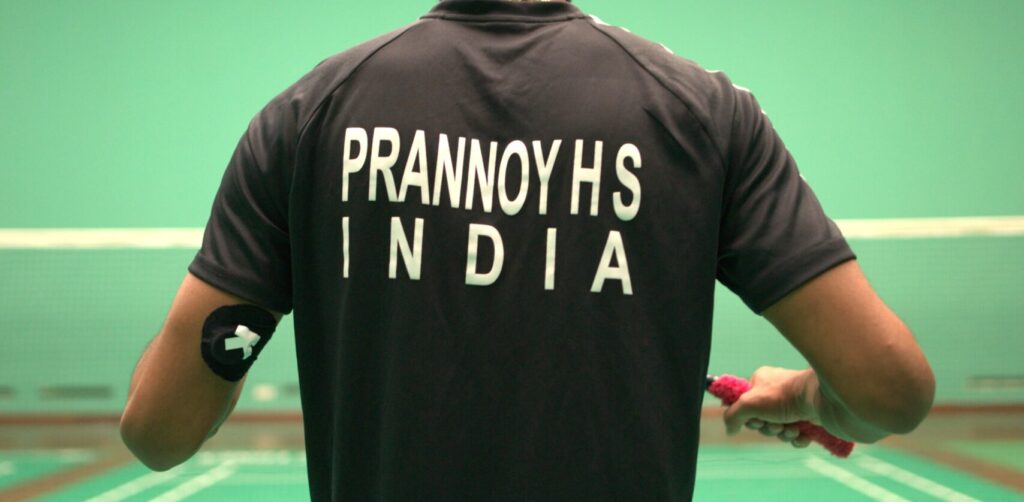Performance anxiety refers to one’s fear or apprehension about their ability to perform a particular task. Affecting people of all ages, from kids to senior citizens, each with their own issues to be anxious about, performance anxiety can feel like the game is over before it even begins. This manifests in athletes too and is referred to as ‘choking’ due to high amounts of perceived stress, though some use the nerves to pump themselves up during competition. Overall, if one’s interpretation of the adrenaline rush is anxiety, leading to irrelevant thoughts taking over, it will most likely interfere with your ability to perform the task.

Highlights
- Performance anxiety is a fear or apprehension about one’s ability to perform a particular task, similar to a footballer getting nervous on the day of an important match,
- When a threat is perceived, the brain is hit with a boost of adrenaline, the emergency hormone, produced in the medulla of the brain by some neurons,
- The technique of visualization can help athletes reduce anxiety.
Performance anxiety affects people in different ways, but the common denominator in all cases is the apprehension arising from performing a particular task. This can range from getting on stage to ‘perform’ in front of a crowd or a footballer getting nervous on the day of an important match. These feelings can get in the way of performing well, and for some, just the thought of performing in front of a crowd can cause panic and anxiety attacks. Some symptoms of this ‘stage fright’ include elevated blood pressure, excessive perspiration, shaking, heart palpitations, nausea and choosing to not perform at all.
It is easy to say that acknowledging the distress caused by and the importance of the event, coupled with unconditional love and support from loved ones, can solve the issue. But that does not work all the time.
The science behind (performance) anxiety
Anxiety can manifest in a person cognitively and physically. The physical symptoms can include dryness in the mouth, an increase in heart rate, sweating and trembling of the body. On the other hand, cognitive symptoms can include feelings of self-doubt, negative self-talk and a general lack of confidence.
Symptoms can take root in different ways for different people. Some take the form of the person’s specific fears and phobias, while the others are fairly generalized, like the symptoms mentioned above.
To understand the why and how of performance anxiety, let’s look at a situation similar to what a person with such anxiety would be experiencing. Let’s say, for instance, that one is face to face with a dangerous animal, like an alligator. When one is caught off-guard in a moment like this, they would feel the sudden urge to do one of four things—fight, flight, freeze or faint.
And unless they’re a trained alligator wrangler, they won’t have much of a choice with regard to which one of those four states of mind they would encounter. They would either want to fight the alligator, run away from it, simply freeze in a state of pure shock or be in so much shock that they would just fall to the ground in an unconscious state. These responses aren’t so different from what one would go through if they were about to run a 100-meter race for the first time on an international platform.
Let’s break the science down here in biological terms. When you see the alligator (visual stimulus of the perceived threat), your brain is hit with a boost of adrenaline (the emergency hormone, produced in the medulla of the brain by some neurons). When you find your sympathetic nervous system (which controls the body’s rapid involuntary responses to dangerous situations) is not helping, you choose to either fight, run, freeze or faint. We can analogize here that the alligator is the audience or the international stage, with everything else being the same, including the feeling of impending death, which can apply to a sports person on the track or even someone about to copulate for the first time.
Actionable
One technique that can help athletes reduce their anxiety is visualization. It refers to the formation of visual images in your mind. With the practice of visualization, which can be seen as akin to experiencing reality, you make an imprint in your brain, i.e. you make a memory. The more often you practise a particular task or routine, the stronger the imprint becomes and the easier it is to recall while doing it again later or during a performance.
According to research, “If you exercise an event over and over [in your mind], your brain will begin to respond as though the idea was a real object in the world.” This happens because the thalamus (the reality-making part) of the brain does not make any distinctions between inner and outer realities.
It has been discovered by neuroscientists that neural pathways in the brain are established by visualization; these pathways behave like a blueprint, which can be used at a later time while performing the particular activity. Fascinatingly, it is seen that the same neural pathways are created by the brain, regardless of whether you are visualizing doing something or actually physically doing it. The whole experience begins to feel more real and is the first step to help other parts of the brain to take action.

How to visualize?
1. Close your eyes. Take a few slow and even breaths to ground your body.
2. Visualize the event. Conjure up every detail, the process of the event. Mentally rehearse your performance in your head, see the event the way you want it to unfold. If you find your mental imaginings turning negative, stop visualizing. Take a breath, reset and start again at the beginning—to see what you want to see.
3. Dive deep into and use all your faculties and senses. Visualize your athletic performance in the minutest detail. Keep in mind every sensory sensation and ask yourself what you would be seeing, hearing, feeling, smelling and tasting while performing the activity. Imagine how your body would feel. Try throwing in some physical movements that complement what you are imagining visually. Relish the excitement of doing your best; if you want, you can even consider visualizing failure.
4. Practise frequently. For athletes, mentally rehearsing is a skill that becomes better with repetition. Practise your visualization or imagery daily.
5. Review and modify as needed.
Conclusion
When we have a terrifying nightmare, we might wake up drenched in sweat and fear, even though our mind knows we aren’t in any actual danger. Similarly, priming our minds to help our body and mind behave a certain way by use of the visualization technique can help keep us grounded and perform in a consistent manner. The mind sometimes finds it difficult to distinguish reality from the imaginings of our mind; we can vividly recall anything so that it almost feels real. This is something we can take advantage of to improve our performance and state of mind in a variety of scenarios. The biggest tool at our disposal, which can make our lives and our actions better, is our mind and its infinite power.
Disclaimer: The contents of this article are for general information and educational purposes only. It neither provides any medical advice nor intends to substitute professional medical opinion on the treatment, diagnosis, prevention or alleviation of any disease, disorder or disability. Always consult with your doctor or qualified healthcare professional about your health condition and/or concerns and before undertaking a new healthcare regimen including making any dietary or lifestyle changes.
References
- https://dictionary.apa.org/performance-anxiety.
- https://www.tandfonline.com/doi/abs/10.1080/1612197X.2016.1242150.
- https://doi.org/10.1007/978-3-030-03801-4_36, https://link.springer.com/chapter/10.1007/978-3-030-03801-4_36.
- https://www.brainfacts.org/thinking-sensing-and-behaving/emotions-stress-and-anxiety/2018/what-is-performance-anxiety-102518.
- https://www.researchgate.net/profile/Dianna-Kenny/publication/223995005_The_factor_structure_of_the_revised_Kenny_Music_Performance_Anxiety_Inventory/links/0fcfd50b5a476be23d000000/The-factor-structure-of-the-revised-Kenny-Music-Performance-Anxiety-Inventory.pdf.








